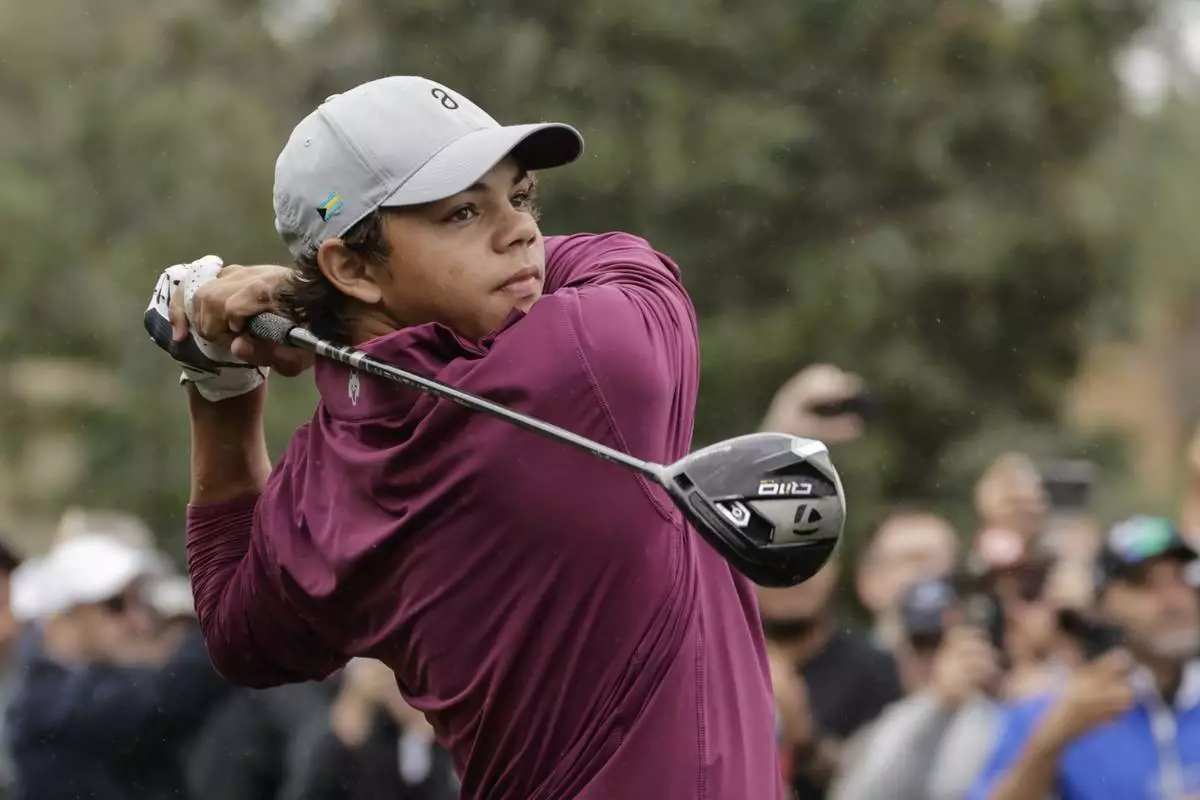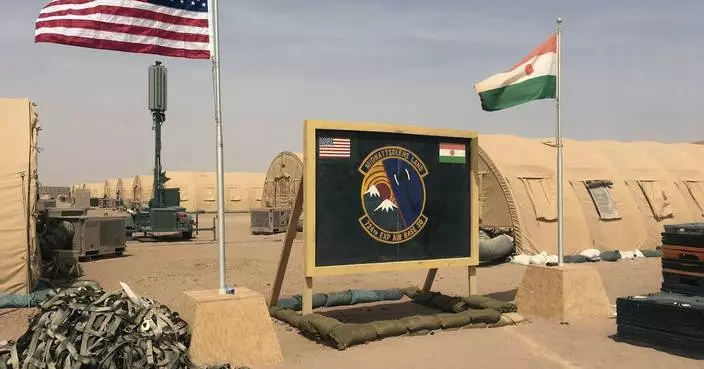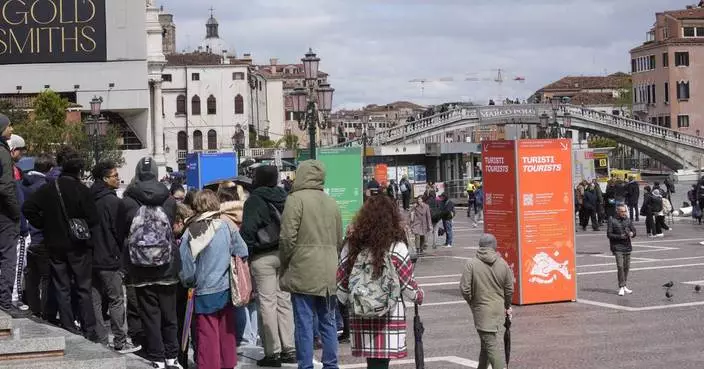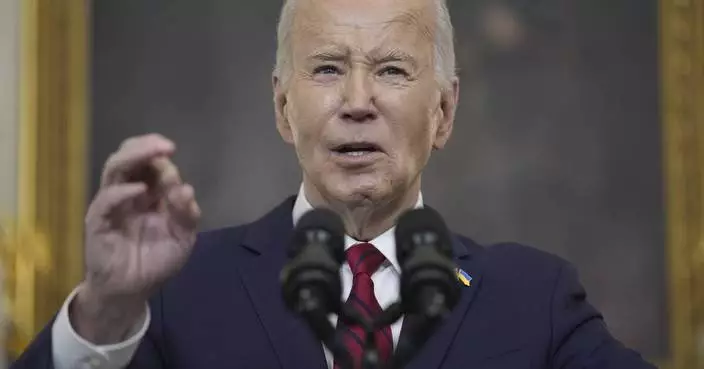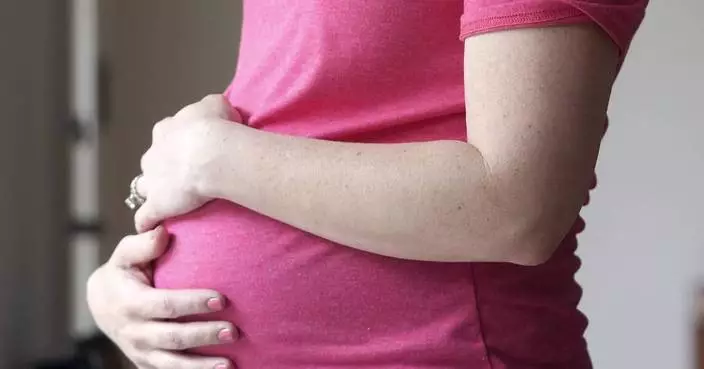A skeleton recently found on California's second-highest mountain could be the remains of a Japanese-American man who disappeared from an internment camp during the waning days of World War II.
The Inyo County sheriff's office told The Associated Press it is investigating the possibility the bones are those of Giichi Matsumura, who separated from a group of men who left the Manzanar camp and hiked into the mountains to fish. Matsumura, an artist, left them to paint and was caught in a freak summer snowstorm in 1945.
The fate of Matsumura is a footnote to one of the darkest chapters of U.S. history when more than 110,000 Japanese-Americans were herded into prison camps in remote locations amid fear they would side with their ancestral homeland in the war.
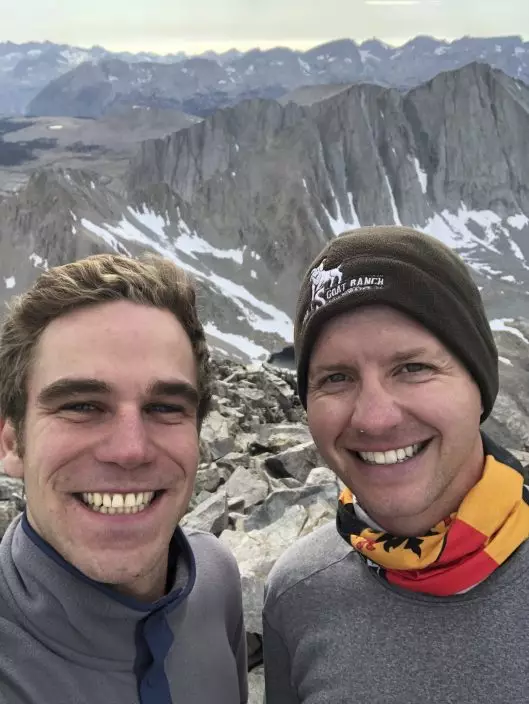
In this selfie shot taken Oct. 7, 2019, Brandon Follin, left, and Tyler Hofer, right, stand atop Mount Williamson, California's second-highest peak. Earlier that day, the two had discovered a human skeleton buried in the rocks below the summit. Inyo County investigators are trying to identify the bones and, among other possibilities are looking into whether they are the remains of Giichi Matsumura, a Japanese man who was buried there in September 1945 after dying on fishing trip while he was incarcerated at the nearby Manzanar internment camp. The gravesite wasn’t mapped, so his final resting place has been a mystery that for years has captivated hikers who searched fruitlessly for Matsumara’s remains. (Brandon Follin via AP)
His body was found a month later by hikers and buried in a ceremony on the mountain weeks after the war ended. The gravesite wasn't mapped, so his final resting place has been a mystery that has prompted some hikers to search fruitlessly for Matsumara's remains in the rugged section of the Sierra Nevada.
A hiker unfamiliar with Matsumura's story was the one who found the bones that could end up solving the mystery. And if it does, Matsumura will have the rare distinction of having been lost once and found twice.
Matsumura was among about 10,000 internees who ended up in Manzanar, a former farming town in the Owens Valley 185 miles (298 kilometers) north of Los Angeles. That area of the sagebrush-dotted high desert, blazing hot in summer and frigid in winter, is flanked by arid peaks to the east and the seemingly impenetrable wall of the high Sierra to the west.
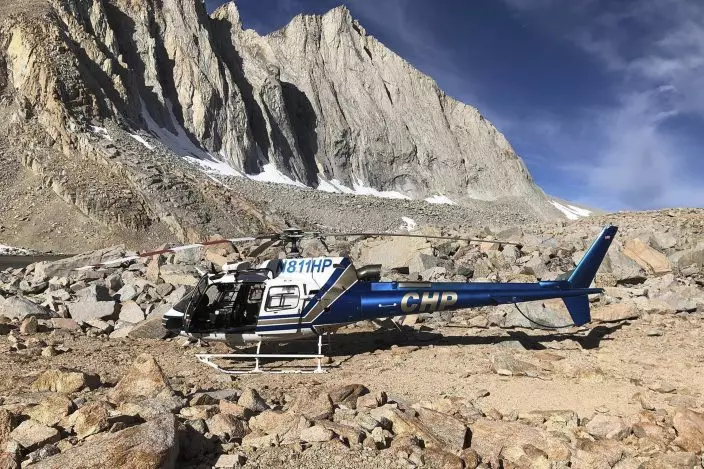
In this Oct. 16, 2019, photo released by the California Highway Patrol, their H-80 helicopter sits near where a human skeleton was discovered on Mount Williamson. The human skeleton may be the remains of a Japanese-American man who died in 1945 as part of a fishing party from the Manzanar internment camp. The Inyo County Sheriff's Department says that is among the possibilities being investigated after the bones were discovered Oct. 7, 2019, by two hikers. (California Highway Patrol via AP)
The camp lies in the shadow of Mount Williamson, soaring 14,374 feet (4,381 meters) above sea level. It was around that mountain where some Manzanar internees found relief from bitter camp life.
Men began sneaking out of the camp at night to go fishing, evading a spotlight from a guard tower manned by soldiers with machine guns, said Cory Shiozaki, director of the documentary film "The Manzanar Fishing Club." The anglers sneaked back into the camp days later with tales — and stringers — of big trout caught in nearby mountain-fed streams and high alpine lakes.
Shiozaki documented about 175 fishing club members. On July 29, 1945, Matsumura tagged along with six to 10 of them in search of golden trout.
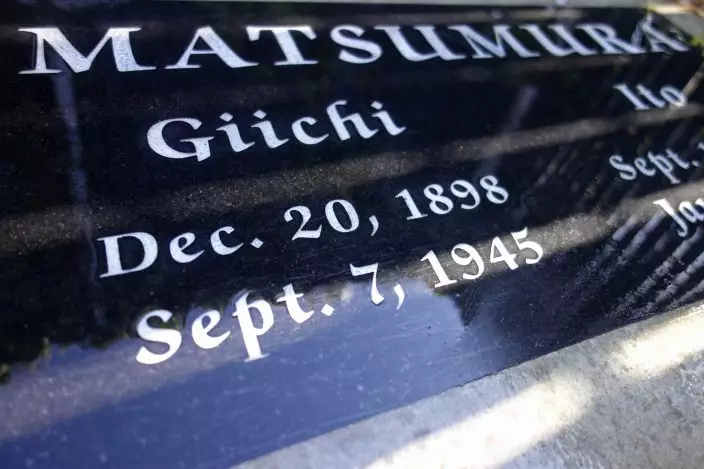
This photo taken Oct. 22, 2019, shows a gravestone in Woodlawn Cemetery in Santa Monica, Calif., that marks the death of Giichi Matsumura, who died in the Sierra Nevada on a fishing trip while he was at the Japanese internment camp at Manzanar. Investigators in Inyo County are investigating whether a skeleton recently found near Mount Williamson is that of Matsumura, who was buried there in September 1945. The gravesite wasn’t mapped, so his final resting place has been a mystery that for years has captivated hikers who searched fruitlessly for Matsumara’s remains. (AP PhotoBrian Melley)
At the time, Germany had surrendered and the U.S. was days away from dropping the first of two atomic bombs on Japan that quickly ended the war. People were allowed to leave Manzanar and the population had dropped by half, said Brian Niiya of Densho, an organization dedicated to preserving the history of Japanese internment.
Many stayed behind, however, because their homes had been taken or they feared racism and violence upon their return.
"It was kind of a black comedy," Niiya said. "They were trying to close the camps and people didn't want to leave. They heard how bad things were on the outside."
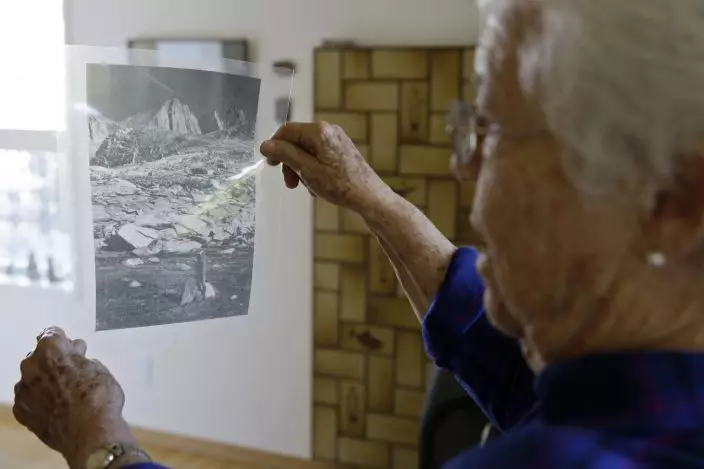
In this photo taken Tuesday, Oct. 22, 2019, Joan Busby looks at a transparency of where her mother found human remains in 1945 of Giichi Matsumura on Mount Williamson, at her home in Mill Valley, Calif. A burial party from Manzanar internment camp ascended the mountain, located the body, buried it and left a small pile of granite slabs to mark the grave. The Inyo County sheriff’s office told The Associated Press it is investigating the possibility that the bones found in October 2019 are those of Matsumura. The gravesite wasn’t mapped, so his final resting place has been a mystery that for years has captivated hikers who searched fruitlessly for Matsumara’s remains. (AP PhotoEric Risberg)
For Matsumura's group, the 11-mile (17.7 kilometers) hike included ascending about 6,000 feet (1,825 meters) over the Sierra crest at Shepherd Pass. They then had to negotiate a trail-less undulating plateau littered with sharp granite boulders between a chain of lakes below Mount Williamson.
Matsumura, 46, was a water colorist and while the fishermen went to one lake, he stopped at another to paint. A rare summer snowstorm blew in that night, Shiozaki said. The fishermen rode out the tempest in a cave
When the weather cleared, they looked for Matsumura. Seeing no footprints in the snow, they assumed he went back to the camp and they returned, expecting to find him there.
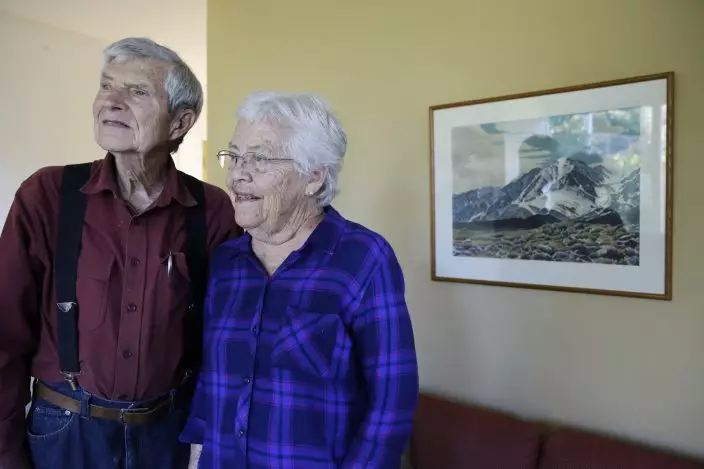
In this photo taken Tuesday, Oct. 22, 2019, Joan Busby, and her husband, Bill, pose at their home in Mill Valley, Calif. In 1945, Joan Busby's mother, Mary DeDecker spotted a branch among a jumble of rocks near Mount Williamson where she found the body of Giichi Matsumura. A burial party from Manzanar internment camp ascended the mountain, located the body, buried it and left a small pile of granite slabs to mark the grave. The Inyo County sheriff’s office told The Associated Press it is investigating the possibility that the bones found in October 2019 are those of Matsumura. The gravesite wasn’t mapped, so his final resting place has been a mystery that for years has captivated hikers who searched fruitlessly for Matsumara’s remains. (AP PhotoEric Risberg)
But Matsumura never made it home. Two search parties spent several days looking for him, but only found a sweater that his wife, Ito Matsumura, confirmed was his, Shiozaki said.
A month later, Mary DeDecker, a botanist and avid hiker, spotted a branch among a jumble of rocks near Mount Williamson. The sighting was unusual at the location above the treeline.
DeDecker, who had been picnicking after abandoning a summit attempt in drizzly conditions, climbed down to investigate. She found either a willow fishing pole or a hiking stick of some kind and the body of Matsumura, said her daughter, Joan Busby.
DeDecker knew about the missing man and reported the location of her find when she returned home. A burial party from the camp ascended the mountain, located the body, buried it and left a small pile of granite slabs to mark the grave.
"It was before the days of helicopters," Busby said. "They left him up there covered in stones and a blanket."
The Manzanar Free Press newspaper reported the story Sept. 8, 1945 on the front page of what was its final edition. It said he got lost Aug. 2 and died from exposure. The gardener from Santa Monica left behind a wife, daughter, three sons, a brother and his father — all living in the camp.
It's unclear if any family members attended the burial or ever returned to the site. As the years passed, the location of his remains was lost.
Robert Matsumura, who was born in the camp in November 1944, said he only has foggy recollections of his uncle's story handed down to him by a generation unwilling to discuss such things.
"Those older Japanese parents didn't talk about things like that," he said. "There's a saying: 'shikata ga nai,' which means, 'If you can't do anything about it, let it go.'"
Over the years, rumors abounded of grave-robbers and there even was one account that a motorcyclist in San Diego was stopped for driving around with a handlebar-mounted skull from the grave, said Bill Busby, DeDecker's son-in-law. He had worked with the Manzanar National Historic Site to try to plot the location on a map.
Hikers have written on blogs about searching for the site and Shiozaki said one of his cameramen searched in vain for the tomb during several trips to the area. When word came that bones had been found earlier this month, Shiozaki said it was the most significant development since the searches began.
"This is a big breakthrough," he said.
The bones were found by Tyler Hofer, a hiker from San Diego who was on his way to Mount Williamson's summit when he went off course and spotted a bleached bone among rocks near a lake. Hofer and a friend, Brandon Follin, moved enough rocks to reveal a skull and an entire skeleton on its back.
The arms were crossed in what seemed to be an intentional burial. The only other items were leather shoes and a belt.
Hofer speculated the person was intentionally killed and posted about it on Facebook, quickly attracting the attention of climbers and mountaineers who offered theories of what had happened.
Authorities quickly downplayed speculation about foul play, with Inyo County sheriff's spokeswoman Carma Roper saying there was no evidence of that.
Sgt. Nate Derr said it's possible the bones had been there since before the early 1960s, when helicopters were used to remove bodies from mountains. Before then, it was common to bury a body where someone died in the mountains, said Dean Rosnau, a longtime search and rescue team member in neighboring Mono County. Most of those graves are known and some are even marked, Rosnau said.
Investigators plan to conduct DNA tests on the bones, a process that could take two to four months, Roper said. Investigators will not reveal if they have a sample from a relative that could prove the identity.
But Bonnie Matsumura, Matsumara's granddaughter, said she was told by the sheriff's office that they had already collected a sample.
"They must have contacted other people in the family," she said. "They told me it was taken care of."
Matsumura's wife Ito was 102 when she died in 2005, 70 years after her husband. The last of their children, Masura, 94, died this summer, according to his son, Wayne Matsumura.
He hadn't heard about the skeleton being found until he was contacted by an AP reporter. If the bones turn out to be the remains of his grandfather, he said there already is a place for them.
In a corner of Woodlawn Cemetery in Santa Monica, where his grandmother is buried, a black granite headstone in the grass bears her name and that of her long-lost husband.
Investigative researcher Randy Herschaft in New York contributed to this report.



